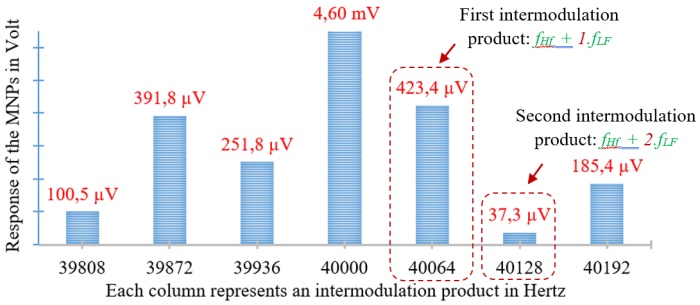Speaker
Description
Developing portable sensors is crucial for improving the detection of biological agents. These devices enable rapid, on-site analysis, providing real-time monitoring that is vital for applications such as disease diagnosis and environmental monitoring or the pathogen detection including viruses and bacteria. Portable sensors are compact, lightweight, and easy to use, making them suitable for deployment in various settings, including remote areas and healthcare facilities. By leveraging advanced technologies, these sensors offer high sensitivity and specificity, facilitating timely detection and response to potential threats, thereby enhancing public health and safety. In this context, the use of sensors based on magnetic nanoparticles proves to be particularly relevant [1].
This paper proposes to investigate an innovative inductive microsensor for multipathogen detection based on magnetic nanoparticles (MNPs) fluid integrated into a microfluidic chip platform. The nonlinear detection process employs Faraday’s law, which relates the voltages measured in intermodulation peaks with the magnetic frequency mixing method [2]. This method couples a low frequency ($f_{LF}$) and a high frequency ($f_{HF}$), capitalizing on the nonlinear response of MNPs with diverse sizes and magnetic properties to dual-frequency excitation. Multiphysics simulations including a magnetic shimming analysis have been performed to optimize the parameters of the microsensor, ensuring its optimal performance. Additionally, experimental validation for $f_{LF}$=64 Hz and $f_{HF}$ =40 kHz and MNPs constituted of Fe$_2$O$_3$ S540 with 20 nm of size is conducted to confirm the results obtained from simulations. Figure 1 illustrates the levels of intermodulation peaks acquired, with the first and second peaks serving as reference points utilized to extract the quantity of detected biological agents.

Fig. 1 Experimental results of Fe$_2$O$_3$ S540 20nm MNPs detection.
References
[1] A. Sobczak-Kupiec, et al, “Magnetic nanomaterials and sensors for biological detection, ” Nanomedicine: Nanotechnology, Biology and Medicine, vol. 12, no. 8, pp. 2459-2473, Nov. 2016 doi : 10.1016/j.nano.2016.07.003.
[2] H-J Krause et al,“Magnetic particle detection by frequency mixing for immunoassay applications, ”Journal of Magnetism and Magnetic Materials, vol. 311, no.1, pp. 436-444, April 2017 doi: 10.1016/j.jmmm.2006.10.1164.

